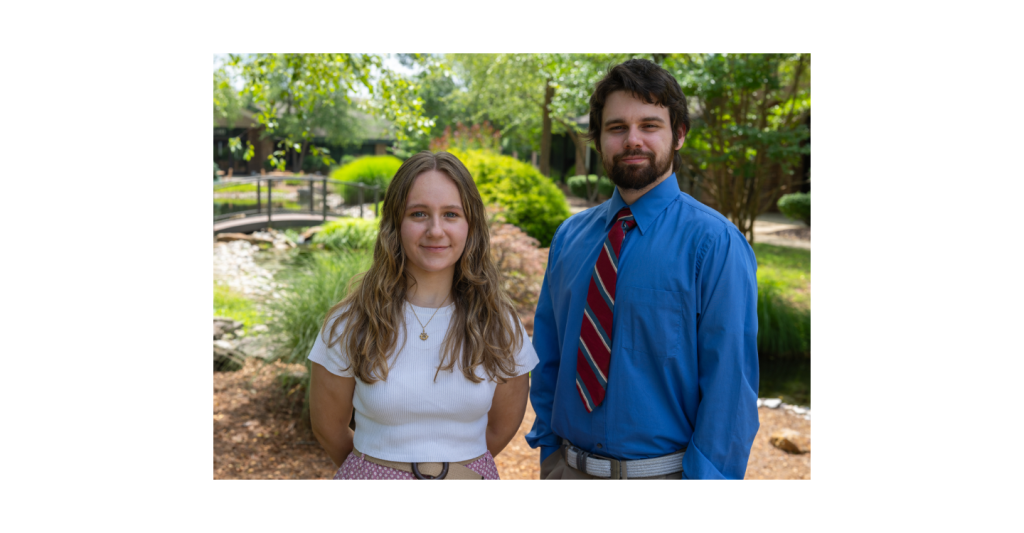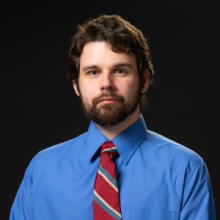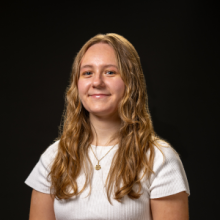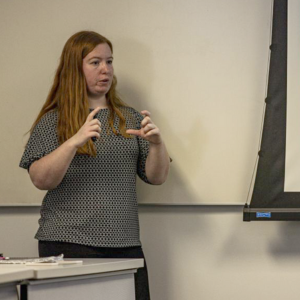
Ian Brady and Olivita Hunt are fire protection engineering students at the University of Maryland and part of the fellowship program at the Fire Safety Research Institute, part of UL Research Institutes. While pursuing graduate degrees at UMD, both fellows have decided to continue the fellowship program to contribute further to fire protection research and advance the safety and health of the public and fire service. We sat down with Ian and Olivita to hear more about their backgrounds and current research projects at FSRI.
Ian Brady Reflects on His FSRI Fellowship and Passion for Fire Protection Engineering
Ian has aspired to become an engineer since middle school, striving to pursue a career that would allow him to help solve the issues people face in their day-to-day lives. His time at UMD has taught him how to communicate with clients about their issues and develop solutions to help alleviate them. Ian discovered fire protection engineering during his undergraduate studies at UMD, where he received a bachelor’s in mechanical engineering and fire protection engineering. He felt particularly drawn to this field to protect people and property from fire, and he has enjoyed the close-knit community in the department.
Ian started his career at FSRI in June 2023 through the internship program, and he began his fellowship six months later. During his time here, Ian has had the opportunity to assist in both bench-scale and full-scale experiments. He has learned about different testing apparatus, testing methods, and the tools FSRI uses to design and conduct experiments, though he notes there is always more to learn, as fire safety continues to evolve with the emergence of new safety concerns. His current research involves building a phi meter, which will measure the equivalence ratio of a sample. Equivalence ratio is the ratio of fuel to oxygen compared to the stoichiometric ratio, which is the ideal fuel-oxygen ratio. The phi meter device samples the smoke from a fire combusting within an enclosure, adds oxygen to it, and runs it through a furnace to complete the combustion. The amount of oxygen before and after the furnace indicates how much oxygen is consumed in order to complete the combustion. This data is important as it tells researchers which configurations or fuel compositions will result in an incomplete combustion. An incomplete combustion, especially the resulting carbon monoxide, poses particular health and safety hazards.
As he reflects on the program, Ian is grateful to have had the chance to conduct life-saving research aimed at advancing fire safety, especially in the supportive environment of his department. Ian has found FSRI and the Columbia, MD, office to be very welcoming, and he has thoroughly enjoyed getting to know the team.
Olivita Hunt Advances Her Fire Modeling Expertise Through the FSRI Fellowship
Olivita began her fellowship with FSRI in June 2024. She discovered the opportunity after meeting FSRI Executive Director Steve Kerber at a celebration with the fire protection engineering program at UMD and learning about the global impact of FSRI’s research.
Prior to her time at FSRI, Olivita received a Bachelor of Science from UMD in fire protection engineering. Her work in FSRI’s fellowship program consists of electric vehicle fire modeling. This work complements her master’s thesis topic, which includes creating a methodology for modeling an electric vehicle to validate experimental work and identifying the key parameters necessary for accurately modeling a vehicle fire. These parameters include the heat of combustion, mass loss rate, radiated fraction, soot yield, field source, fire spread, and burner interaction.
Olivita’s experience at FSRI has provided opportunities that cannot be found in the classroom, such as attending burn sites and observing large-scale testing in person. Additionally, she is improving her problem-solving approach and gaining a better understanding of the steps involved to reach a solution. She has also developed her skills in using the fire dynamics simulator, a computer program that simulates how fire and smoke spread, as well as the graphical user interface for the FDS called PyroSim. In the future, Olivita hopes to continue developing her skills in fire modeling and take part in experimental research, particularly middle-to-large-scale testing, which is more representative of real-life fire scenarios.



